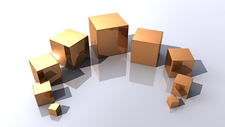Non-Standard Units

TEKS Objective
The students will measure organisms and objects and parts of organisms and objects, using non-standard units.
Essential Understanding
The student uses age-appropriate tools and models to investigate the natural world.
Science Background
Measurement, Classroom Case Studies Grade K-2: The Annenberg Foundation (website) - In 1st grade, students are not learning about measurement using standard units. They are simply comparing objects (e.g., how heavy or light something is; which object is heavier or lighter than others). Students measure length, mass, capacity and volume with uniform non-standard units such as clothespins, paper clips, pennies, centimeter cubes, or unifix cubes. In 3rd grade, the metric system is introduced as the standard science measurement system.
Measurement, Classroom Case Studies Grade K-2
The Annenberg Foundation, www.learner.org
Signature Lesson
How Many Steps? Illuminations Resources for Teaching Math, NCTM (website) - Students measure distances using non-standard units and record their measurements in a bar graph.
How Many Steps?
Illuminations Resources for Teaching Math, NCTM, illuminations.nctm.org
- Supporting Lessons
- Extensions
- Assessment Ideas
- Literature Connections
- Related
TEKS - Additional Resources
Supporting Lessons
Estimation and Measurement: Science NetLinks (website) - Learn to use unconventional (non-standard) units to estimate and measure.
Estimation and Measurement
Science NetLinks, www.sciencenetlinks.com
Elaboration Lessons and Extensions
Measurement, Classroom Case Studies Grade K-2: The Annenberg Foundation (website) - Learn how to use non-standard units to measure objects.
Measurement, Classroom Case Studies Grade K-2
The Annenberg Foundation, www.learner.org
Assessment Ideas
The Difference Between Formative and Summative Assessments: eHow Family (website) - Assessment provides important feedback regarding student performance and mastery of concepts. Use these methods to inform your instruction.
Literature Connections
Super Sand Castle Saturday. Murphy, Stuart J. (ISBN 0-06-446720-1)
Measuring Penny. Leedy, Loreen. (ISBN 0805065725)
Measurement. Dowdy, Penny. (ISBN 0778743411)
Additional Resources
The Effective Detective: PBS Kids (website) - An interactive game in which students use properties to describe characters from the “Arthur” storybook series.
TEKS Navigation
Grade 1
Need Assistance?
If you need help or have a question please use the links below to help resolve your problem.

Comments